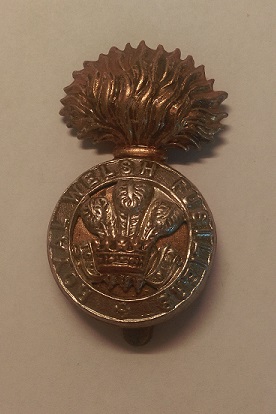
The Royal Welch Fusiliers (Welsh: Ffiwsilwyr Brenhinol Cymreig) was a line infantry regiment of the British Army, and part of the Prince of Wales's Division, that was founded in 1689; shortly after the Glorious Revolution. In 1702, it was designated a fusilier regiment and became the Welch Regiment of Fusiliers; the prefix "Royal" was added in 1713, then confirmed in 1714 when George I named it the Prince of Wales's Own Royal Regiment of Welsh Fusiliers. In 1751, after reforms that standardised the naming and numbering of regiments, it became the 23rd Regiment of Foot (Royal Welsh Fuzileers). In 1881, the final title of the regiment was adopted.
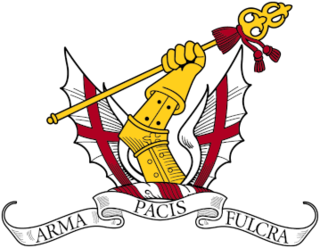
The Honourable Artillery Company (HAC) is a reserve regiment in the British Army. Incorporated by royal charter in 1537 by King Henry VIII, it is the oldest regiment in the British Army and is considered the second-oldest military unit in the world. Today, it is also a charity whose purpose is to attend to the "better defence of the realm", primarily through supporting the HAC regiment. The word "artillery" in "Honourable Artillery Company" does not have the current meaning that is generally associated with it, but dates from a time when in the English language that word meant any projectile, for example arrows shot from a bow. The equivalent form of words in modern English would be either "Honourable Infantry Company" or "Honourable Military Company".

The Duke of Wellington's Regiment (West Riding) was a line infantry regiment of the British Army, forming part of the King's Division.

The Royal Gurkha Rifles (RGR) is a rifle regiment of the British Army, forming part of the Brigade of Gurkhas. Unlike other regiments in the British Army, RGR soldiers are recruited from Nepal, which is neither a dependent territory of the United Kingdom nor a member of the Commonwealth.

The Princess of Wales's Royal Regiment is the senior English line infantry regiment of the British Army, second in the line infantry order of precedence to the Royal Regiment of Scotland and part of the Queen's Division.

The Duke of Lancaster's Regiment (LANCS) is an infantry regiment of the line within the British Army, part of the King's Division. Headquartered in Preston, it recruits throughout the North West of England. The title of Duke of Lancaster merged with the Crown on the accession of Henry V in 1413 and remains dormant, subject to any future revival. Customarily, however, the Sovereign is referred to as the Duke of Lancaster within Lancashire and in relation to the Duchy of Lancaster, and is the regiment's Colonel in Chief. The Duke of Lancaster's Regiment is the county regiment for Cumbria, Lancashire, Greater Manchester, Merseyside and the Isle of Man, and as such, recruits mainly from these areas.

The Royal Welsh is an armoured infantry regiment of the British Army. It was established in 2006 from the Royal Welch Fusiliers and the Royal Regiment of Wales.
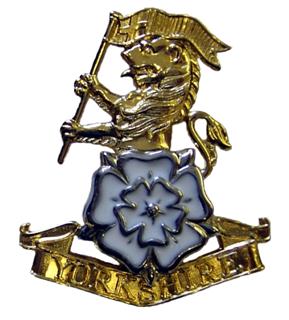
The Royal Yorkshire Regiment is an infantry regiment of the British Army, created by the amalgamation of three historic regiments in 2006. It lost one battalion as part of the Army 2020 defence review. The regiment's recruitment area covers the ceremonial counties of the East Riding of Yorkshire, North Yorkshire, South Yorkshire and West Yorkshire; areas near Barnsley are recruitment area for the Rifles.
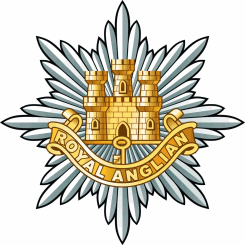
The Royal Anglian Regiment is an infantry regiment of the British Army. It consists of two Regular battalions and one Reserve battalion. The modern regiment was formed in 1964, making it the oldest of the Line Regiments now operating in the British Army, and can trace its history back to 1685. The regiment was the first of the large infantry regiments and is one of the three regiments of the Queen's Division.
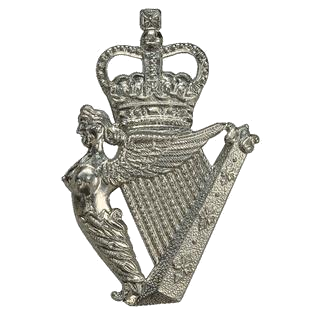
The Royal Irish Regiment is an infantry regiment of the British Army. The regiment was founded in 1992 through the amalgamation of the Royal Irish Rangers and the Ulster Defence Regiment. Their oldest predecessor, the 27th Regiment of Foot, was first raised in June 1689 to fight in the Williamite War in Ireland. Other notable regiments in their lineage include the Royal Inniskilling Fusiliers, Royal Irish Rifles and the Royal Irish Fusiliers.
The Rifles is an infantry regiment of the British Army. Formed in 2007, it consists of four Regular battalions and three Reserve battalions. Each Regular battalion of The Rifles was formerly an individual battalion of one of the two large regiments of the Light Division. Since formation, the regiment has been involved in combat operations in the later stages of the Iraq War and in the War in Afghanistan.

The Royal Regiment of Scotland (SCOTS) is the senior and only current Scottish line infantry regiment of the British Army Infantry. It consists of three regular and two reserve battalions, plus an incremental company, each formerly an individual regiment. However, three regular battalions maintain their former regimental pipes and drums to carry on the traditions of their antecedent regiments.
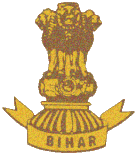
The Bihar Regiment is an Indian Army infantry regiment. It traces its origins back to the British Indian Army. The Bihar Regiment was formed in 1941 by regularising the 11th (Territorial) Battalion, the 19th Hyderabad Regiment, and raising new battalions. The Bihar Regimental Centre (BRC) is located at Danapur Cantonment, Patna, the second oldest cantonment of India. INS Vikramaditya, the Indian Navy's largest ship and one of its two aircraft carriers is affiliated to the Bihar Regiment, Indian Army's highly decorated and battle-hardened unit.
The 27th Infantry Regiment, nicknamed the "Wolfhounds", is a regiment of the United States Army established in 1901, that served in the Philippine–American War, in the Siberian Intervention after World War I, and as part of the 25th Infantry Division during World War II, the Korean War, and later the Vietnam War.

The Duke of Cornwall's Light Infantry (DCLI) was a light infantry regiment of the British Army in existence from 1881 to 1959.
A large regiment is a multi-battalion infantry formation of the British Army. First formed in the 1960s, large regiments are the result of the amalgamation of a number of existing single-battalion regiments, and perpetuate the traditions of each of the predecessor units.

Battlesbury Barracks is a British Army installation in Warminster, Wiltshire, England. It is the permanent base of the Royal Dragoon Guards, serving as armoured cavalry.

The London Guards is a formation within the British Army comprising the reserve companies of the Grenadier, Coldstream, Scots and Irish Guards. On formation these companies drew their personnel from the London Regiment and it traces its history back to the formation of that regiment in 1908 when 26 separate Volunteer Force battalions were brought together. The London Guards is not a regiment, the companies wear the uniform, and follow the traditions, of their foot guards regiment.

Captain Sir Thomas Moore, more popularly known as Captain Tom, was a British Army officer and fundraiser. He made international headlines in April 2020 when he raised money for charity in the run-up to his 100th birthday during the COVID-19 pandemic. He served in India and the Burma campaign during the Second World War, and later became an instructor in armoured warfare. After the war, he worked as managing director of a concrete company and was an avid motorcycle racer.

The Union Division is an administrative unit of the British Army responsible for the training and administration of regiments of line infantry.















